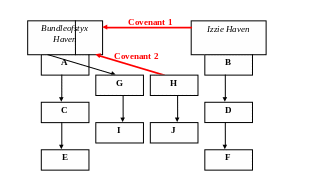nature and science, 2011;9(1) http://www.sciencepub.net/nature the effect of job conscientiousness on job performance wafaa fathi sleem1 a
Nature and Science, 2011;9(1) http://www.sciencepub.net/nature
The Effect of Job Conscientiousness on Job Performance
Wafaa Fathi Sleem1 and Neamat Mohmed El-Sayed2
1Nursing Administration Department, Faculty of Nursing, Mansoura
University, Mansoura, Egypt
2 Nursing Administration Department, Faculty of Nursing, Damnhore
University, Damnhore, Egypt
[email protected] [email protected]
Abstract: Job conscientiousness used as a predictor of job
performance, because of it is one of the Big Five dimensions that is
good in all jobs. So, the study aimed to examine the relation between
job conscientiousness and job performance of staff nurses at Mansoura
Main University Hospital. All staff nurses (n=68) working in surgical
units were included in the study .A descriptive correlation design was
used. Data collected through two tools, the first consists of two
parts, the first part was intended to collect individual
characteristics of studied staff nurses, the second part was six
factor personality questionnaire to measure job conscientiousness .The
second tool was observation check list to measure job performance. The
relation between job conscientiousness and job performance of staff
nurses were no significant, positive correlation.
[Wafaa Fathi Sleem and Neamat Mohmed El-sayed The Effect of Job
Conscientiousness on Job Performance. Nature and Science 2011; 9(1):
130-136]. (ISSN: 1545-0740). http://www.sciencepub.net.
Keywords: Job Conscientiousness -Job Performance -Surgical units.
1. Introduction
Our personality is formed from feelings, thought patterns, interests,
and other behaviors which makes each of us unique. These personality
traits can be understood as aspects of five broad categories. The five
categories of personality traits are: extraversion, agreeableness,
neuroticism, openness, and job conscientiousness (1).
Conscientiousness is the most common label for a factor that is known
as dependability will to achieve self-control, prudence, and
constraint. Conscientiousness describes the person who controls the
impulse, following rules and norms. (2).
Conscientiousness person is the person who acts purposefully, displays
behavior that is strong willed, determined and detail oriented .There
are several characteristics of conscientious person which are:
tendency to achieve more and having higher well being, having high
level of motivation, more likely to achieve highly and obtain higher
well being(3). Further more conscientiousness has been shown to be the
most useful factor in personnel selection for all jobs. (4)
Job conscientiousness is separating into achievement and dependability
(5). While another defined it as the degree of effectiveness and
efficiency, with which an individual plans, organizes and carries out
tasks (3). Moreover conscientiousness is a possible trait oriented
motivation variable and correlated with job performance (6.).
Job conscientiousness is a predictive of job performance as measured
by production records, adaptive performance or novel problem solving,
managing uncertainly, and coping with new technology, tasks,
procedures and work stress, reliability, effort, among work groups (7).
Performance is an actual situated behavior that is what is actually
done in the real life and what is actually carried out by nurses in
their clinical practice (8). Nursing performance is the statement of
expected result, behavior, or attitude. A minimum level standard
provide a pass- fail situation. Nursing performance below the
specified level is unacceptable, signaling a need for remedial or
administrative action (9)
Nursing performance is something a nurse or organization does process,
procedures, or achieve outcomes. Nursing performance can provide
information on which to base management decision regarding such as
promotion or transfer (10).
Motivation and ability consider as determinants of job performance.
Such performance identifies six categories as important to nurses
which are: daily job performance, attendance, punctuality, adherence
to policies and procedures, absence of incidents, errors, and
accidents, finally is honesty and trustworthiness (11). An effective
nursing performance has at least two major purposes the first is to
improve the functioning of the organization, and the second is to
foster the personal development of the nurse within the heath care
organization (10).
In nursing, there is positive correlation between work
conscientiousness and job performance. The nurses who are high in
conscientiousness tend to be responsible, dependable persistent and
achievement oriented. They are likely to accomplish their performance
or try to accomplish what is expected from them. (12)
Studies done in this field in USA focused on examining the effect of
accountability on the conscientiousness –performance relationship, it
was founded that the interaction of conscientiousness and
accountability was investigated in the context of performance using
cognitive work conscientiousness (13).
However no attempt was done at Mansoura Main University Hospital to
determine the effect of conscientiousness on job performance of staff
nurses at surgical units. It is hoped that this study will give more
insight to understand the personality traits that affect nurses'
performance.
Aim of the study
The study aims to examining the effect of job conscientiousness on job
performance of staff nurses working in surgical units at Mansoura Main
University Hospital.
Materials and Methods:
Research Design:
A descriptive correlation design was utilized in this study
Research question:
Is there a relationship between job conscientiousness and job
performance of staff nurses working in surgical units at Mansoura Main
University Hospital?
Setting:
The study was conducted at Mansoura Main University Hospital in all
surgical units (n=5 units) as unit 6, 7, 8, 11, 12, 17 surgery.
Subjects:
All staff nurses (n= 68) were included from the previous mentioned
setting to be involved in the study.
Tools for data collection:
Two tools were employed:
First tool:
The six factor personality questionnaire: it developed by Jackson (14)
to measure work conscientiousness. It consists of 24 items divided
into two dimensions: Methodical ness and Industriousness. The first
dimension is methodical ness divided into:
- Cognitive structure (n=6 items) focused on the ability of person to
develop careful planning, think carefully before acting, and know what
he needs.
- Deliberateness (n=6 items) focused on tendency to think carefully
before acting, cautious, deliberate, logical, and mature.
- Order (n=6 items) focused on neat, tidy, well organized, precise,
efficient and methodical.
The second dimension is industriousness includes: endurance (n=6
items) which focused on the ability to begin tasks and carry them
through to completion despite boredom and other distractions.
Responses were measured on a five point likert scale ranging from 1=
strongly disagree, 2=disagree, 3= natural, 4= agree, 5= strongly
agree.
Second tool:
Observation checklist: it developed by Abdrabou(15) , to asses staff
nurses' job performance. It consisted of 45-items divided into eight
categories:
-Psychosocial individual (12 items).
-Patient status (6 items).
-Communication (8 items).
-Professionalism (3items).
-General patient care (6 items).
-Dressing (7 items).
-Vital signs (3 items)
-Medication (4 items).
Besides, personal data sheet: It includes: nurses' gender, educational
qualifications, age, years of experience, and marital status.
Scoring System:
Observation checklist scored on the bases of done or not done each
activity; done scored (1 point), not done scored (zero). Adequate
level of nurses' performance is 75%, and inadequate level of nurses
performance is <75% (15). And, if the performance of the all studied
staff nurses were belonged to inadequate or adequate performance
(<75%,75% ), they were classified to three degrees (low–moderate –high
)to find statistical relation between job conscientiousness and job
performance.
Methods of data collection:
-An official permission from the Mansoura University Hospitals'
director to conduct the study.
-The two tools (questionnaire sheet and observation checklist)
contents were developed and tested for its content validity through
six expertise from three different universities. Double translation
English-Arabic-English was done to ensure validity of translation.
-The researchers contacted to the nurses to explain the purpose and
procedure of the study and determine the available time to collect
data.
-A pilot study carried out on 10 nurses in order to test clarity of
questions, also to estimate the needed time to fill it, and to make
sure that items are understood. All nurses involved in the pilot study
were excluded from the study sample later on.
Ethical consideration:
All participants interviewed for explaining the purposes and
procedures of the study, and they have the right to withdraw from the
study at any time during the study. Oral consent to participate was
assumed by attendance of filling questionnaire sheet.
Statistical analysis:
Computerized data entry and statistical analysis were fulfilled using
the statistical package for social sciences (SPSS).Data were presented
using descriptive statistics in the form of frequencies percentages,
means and standard deviations for quantitative variables. Statistical
significance was considers at p-value <0.05.Person correlation
analysis was used for assessment of the inter-relationships among
quantitative variables .
3. Results
Table (1) describes the personal characteristics of the studied staff
nurses. The mean age of the studied staff nurses was 34.59 ± 9.87
years and the highest of them (39.7%) aged from20 years to less than
30 years.
Mean score of experience years of the studied staff nurses was 15.43 ±
8.56 years, with 33.8 % of them had experience in nursing from 10 to
less than 20 years.
Table (1): Personal characteristics of the studied staff nurses (n=68
).
Variables
The studied staff nurses
n
%
Age (years):
20-
27
39.7
30-
18
26.5
40-
16
23.5
50-57
7
10.3
Range
20-57
Mean±SD
34.59±9.87
Experience (years):
<10
20
29.4
10-
23
33.8
20-
18
26.5
30-36
7
10.3
Range
1-36
Mean±SD
15.43±8.56
Table (2), show job conscientiousness of the studied staff nurses. The
total mean job conscientiousness score was 3.68 ± 0.61. As regard to
Deliberate and Endurance dimensions of Job conscientiousness, the
majority of staff nurses (57.4 %and 48.5 % respectively) recorded that
they were neutral. While no one recorded strongly disagreed to all
dimensions of job conscientiousness.
Table (2): Job conscientiousness of the studied staff nurses (n=68).
Job conscientiousness items
Strongly disagree
Disagree
Neutral
Agree
Strongly agree
Mean±SD
n
%
n
%
n
%
n
%
n
%
A-Methodical ness:
1-Coganitive
0
0
9
13.2
22
32.4
32
47.1
5
7.4
3.48±0.82
2-Deliberat
0
0
0
0
39
57.4
26
38.2
3
4.4
3.47±0.58
3-Order
0
0
0
0
27
39.7
32
47.1
9
13.2
3.73±0.68
Total
0
0
0
0
33
48.5
32
47.1
3
4.4
3.56±0.58
B-Industriousness
(Endurance)
0
0
2
2.9
33
48.5
29
42.6
4
5.9
3.51±0.66
Total conscientiousness
0
0
0
0
27
39.7
36
52.9
5
7.4
3.68±0.61
Figure (1) ,described performance dimensions of the studied staff
nurses. According to scoring system, all staff nurses had inadequate
performance. Regarding dimensions of performance, vital signs were the
highest among staff nurses (85.3 %). While dressing was the lowest
dimension (8.8%) among staff nurses.
Figure (1): Performance dimensions among the studied staff nurses
(n=68)
Table (3), show the total number of staff nurses had inadequate
performance. , with no statistically significant relation between Job
conscientiousness of the studied staff nurses and their degree of
Performance (P=0.482).
Table (3): Relationship between Job conscientiousness of the studied
staff nurses and their degree of Performance (n=68).
Total Job conscientiousness
Degree of performance (all inadequate) of the studied staff nurses
Low
(n=38)
Moderate
(n=22)
High
(8)
X2
P
n
%
n
%
n
%
Disagree
15
55.6
8
29.6
4
14.8
3.470
0.482
Neutral
22
61.1
11
30.5
3
8.3
Agree & strongly agree
1
20.0
3
60.0
1
20.0
Table (4), from the table a statistically significant relation was
found between the studied staff nurses age and job conscientiousness
p= 0.048*
Table (4): Relationship between job conscientiousness of the studied
staff nurses (n=68).
Variables
Age groups of the studied staff nurses
X2
P
20-<30
(n=27)
30-<40
(n=18)
40-<50
(n=16)
50-57
(n=7)
n
%
n
%
n
%
n
%
Job conscientiousness:
Neutral
10
37.0
10
55.6
7
43.8
0
0
12.705
0.048*
Agree
17
63.0
7
38.9
6
37.5
6
85.7
Strongly agree
0
0
1
5.6
3
18.8
1
14.3
Performance (all inadequate):
Low
14
51.9
11
61.1
7
43.8
6
85.7
6.418
0.378
Moderate
8
29.6
5
27.8
8
50.0
1
14.3
High
5
18.5
2
11.1
1
6.3
0
0
*Significant (P<0.05)
Table (5) shows that there were a statistically significant relation
between the job conscientiousness and experience years of the studied
staff nurses (P=0.033*). While there were no statistically significant
relation between years of experience of the studied staff nurses and
their performance (all inadequate).p=0.572
Table (5): Relationship between job conscientiousness and job
performance of the studied staff nurses and their experience years
(n=68).
Variables
Experience years of the studied staff nurses
X2
P
1-<10 (n=20)
10-<20 (n=23)
20-<30 (n=18)
30-36 (n=7)
n
%
n
%
n
%
n
%
Job conscientiousness:
Neutral
7
35.0
13
56.5
6
33.3
1
14.3
13.740
0.033*
Agree
13
65.0
10
43.5
8
44.4
5
71.4
Strongly agree
0
0
0
0
4
22.2
1
14.3
Performance(all inadequate):
Low
12
60.0
13
56.5
8
44.4
5
71.4
4.783
0.572
Moderate
4
20.0
8
34.8
8
44.4
2
28.6
High
4
20.0
2
8.7
2
11.1
0
0
*Significant (P<0.05)
Figure (2) shows, There was no significant positive correlation
(P=0.503), between job conscientiousness and job performance of the
studied staff nurses.
Figure (2): Correlation between job conscientiousness and job
performance of the studied staff nurses (n=68).
4. Discussion:
Conscientiousness is the degree to which an individual perseveres, is
responsible and is organized. So, it is the degree of effectiveness
and efficiency, which an nurses plans, organizes and carries out jobs.(
3)
As regard to the overall total dimensions of job Conscientious, the
majority of staff nurses at Mansoura University Hospital, had higher
scores regarding job conscientiousness. This may be due to the staff
nurses will do their efforts to stay with the organization, so they
become more conscious, responsible and achievable. This result
supported by previous study (16) who proved that conscientious nurses
tend to get highly involved in their jobs, possibly involvement
extends to the organizations well.
The majority of staff nurses recorded that they were neutral of
deliberate dimension of job conscientiousness, these result mean that
the staff nurses are dependable persistent and achievement oriented.
In the same respect nurses in job conscientiousness tend to be
organized, comprehensive and plan full (17).
On the other hand, no one of the studied staff nurses recorded
strongly disagreed toward all dimensions of job conscientiousness. It
is probably due to that nurses had a desire to seek the best knowledge
in a given context, and they tend to be will experience higher level
of will being. This findings consistent with another study(18) that
mentioned job conscientiousness be conceptualized as appositive ,
adaptive personality trait that is important for well being,
employment and personal functioning
The present study revealed that all studied staff nurses had in
adequate performance, that may be to the lack of training, guidance in
carrying out there job’s or tasks which affect on performance and
quality of performance. Also shortage of staff nurses number and lack
of coworkers leads to increase workload on staff nurses and decrease
productivity of them.
These result comes in agreement with Elaine (19) who suggests that
professional nurses provide a higher quality of performance than other
categories of nurses and untrained heath workers or assistant .While,
there are widespread and growing concerns about inadequate quality of
heath care n the united states, as rising costs, medical errors and
the inability to receive needed services are frequent topics in heath
care journals, newspaper as well as televisions and radio reports (20).
The finding of the present study revealed that the dimension of vital
signs and medication were the highest dimensions among staff nurses at
Mansoura University Hospital. It is may be due to staff nurses works
as doctor orders ,and description of vital signs and medication are
the main roles of physician in the patient’s record. These finding is
consistent with Shehata (21) when mentioned that patient’s medication
and patient medical record are potentially beneficial and valuable as
evidence in legal cases .
In relation to the result of the study more than half of staff nurses
had job conscientiousness with low performance this may be to lack of
closed supervision or one of the major problems for nursing is that
there is no universal understanding of what nurses actually do.
This result inconsistent with Elaine ( 19) ,who stated that nurses
frequently assert they know they give good nursing care and this care
makes a difference to the heath out comes of patients .While job
conscientiousness is the most critical traits in relating personality
to job performance criteria across different occupational categories
(22).
As regard to the relation between job conscientiousness and job
performance of the studied staff nurses and their ages, there were
significant relation between them .This mean the older nurses were
more had opportunity to better one’s position in the work ,so that the
staffs who had older than years had highest dimensions of job
conscientiousness compared to others.
This result supported by EI.liethy (23),who found that older nurses
age will increase the ability to plan and cognitive thinking and able
to think in problem for long time until they solve it .
Regarding relation between job conscientiousness and job performance
of the studied staff nurses and their years of experience, the study
revealed there were a significant relation between them. The finding
is incongruent with Shehata (21) who found that were negative relation
ship between staff nurses performance and their years of experience.
On the other wise the result consistent with Shehata(24)who found that
older nurses had more experience in providing nursing care to take a
challenging tasks and better communication skills.
In the respect of the total job conscientiousness and job performance
of the studied staff nurses the result revealed that were no
significant, positive correlation, this disagreed with PsyAsia (25)who
stated that people who have been assessed to be higher on job
conscientiousness tend to perform better at work . While Tett (26)
stated that conscientious individuals tend to adhere to rules and
procedures, and highlights that in certain professions, strictly
following rules and procedures may affect creativity and innovation.
It is proposed that such adherence to rules and procedures can affect
productivity as such individuals would be unlikely to develop novel.
Conclusion and Recommendation:
There were no significant correlation between the total job
conscientiousness and job performance of the studied staff nurses at
Mansoura University Hospital.
The majority of staff nurses had high score regarding job
conscientiousness, while all studied staff nurses had inadequate level
of performance.
Based on the results of the study the following recommendations are
suggested:
- The administrative personnel should develop criteria for the proper
selection of nursing staff.
- The nursing managers should provide in service training programs
regarding managerial skills for nursing staff .
-The nursing managers encourage nursing staff to use nursing process
as a quality evaluation tools to assess the quality of nursing
performance.
- The nursing manager should examine the influence of nursing care and
practice on positive patient outcomes.
-The nursing manager should provide a systematic and evidence based
review of nursing staff to facilitate the determination of nursing
staff.
-The administrative personnel provide a periodic review to the job
description of nursing staff.
-Regular evaluation of nursing staff performance, using a motivation
action as rewarding good performance and giving them feedback.
Corresponding author
Wafaa Fathi Sleem1
Nursing Administration Department, Faculty of Nursing, Mansoura
University, Mansoura, Egypt
[email protected]
References:
1.
Eustice C., Personality traits: The Power of personality,
arthritis about. Com/od/emotion /a /personality. htm , retrieved
at 8-12-2011 .
2.
-Poropat A. A; meta-analysis of the five factor model of
personality and academic performance. Psychological Bulletin,
2009; 135: 322-328 .
3.
-Taylor and de Bruin's . Advancing a frame work for coherent
research on women's entrepreneurship theory and practice, 2006;
31(3) 323-339.
4.
-Steel P., Schmidt J., and Shultz J., Refining the relationship
between personality and subjective well-being. Psychological
Bulletin, 2008; 134(1) 138-161.
5.
-Mount M., Barrick M., and Strauss P. the joint relationship of
conscientiousness and ability with performance: Test of the
interaction Hypothesis – Journal of management, 1999; 25 (5) :
707-721 .
6.
-Roberts W., Chernyshenko S., Stark S., and Goldberg R. The
structure of Conscientiousness: An empirical investigation based
on Seven Major personality questionnaires personal prychology,
2005; 58:103-139.
7.
-Cortina.m., Goldstein B.,pange c.,Davison K.,and Gillilud w.,The
incremental validity of interview score over and above cognitive
ability and conscientiousness scores personnel psychology,2000;
93(2),325-351.
8.
-While A., Competence versus performance: which is more important
journal of advanced nursing, 1994;20(3)525-531.
9.
-Byington E., and Felps w. Why do IQ scores predict job
performance?An alternative ,sociological explanation. journal of
performance ? An alter native, Sociological explanation. Journal
of organizational Behaviors, 2010;30,175-202 .
10.
Ellis J.R,and:Hartely C.L., Management and Coordinating Nursing
Care,5th ed., New york: Walters Kluwer Health/ Lippincott Williams
Wilkins com . 2009; PP : 253,259-260 .
11.
Sullivan & Decker; Effective Leadership Management nursing, 6th
ed., Inc., 2005; P.260.
12.
Kirkwood C. Effect of conscientiousness and professional work
autonomy on nurses' organizational commitment (affective and
continuance) and intent to stay. Unpublished master thesis Quean's
university. Canada., 2006
13.
Kok J., Uhlaner, L., and Thurik, A. Professional HRM practices in
family owned- managed enterprises. Journal of small Business
Management, 2006; 44(3) 112-125.
14.
Jackson d, Paunsones S., Trenpbly, P. Six factor personality
Questionnaire Manual. Port Hurnon MI: Sigma Assessment systems
2000). In Kirkwood C. Effect of conscientiousness and professional
work autonomy on nurses' organizational commitment (affective and
continuance) and intent to stay. Master thesis. Quean's
university; 2006; (31).
15.
Abdrabou F. Relationship between nurses job satisfaction and
Quality of their performance, master Degree, faculty of nursing
Ain Shams University 2002 ; P. 62-70 .
16.
Erdheim J., Wang. M., Zicar J., Linking the big five personality
constructs to organizational commitment, personality and
individual difference., Journal Personality and Individual
differences, 2006; 41: 959-970 . www.elesevier.com/locate/paid
(Retrieved at 8-12-2011).
17.
Srivasatava, S. Measuring the Big five personality factors.
Raliski P.An Empirical Demonstration of Direct and Indirect
Applications of Mixture Modeling when studying personality traits:
A Methodological- Substantive synergy. unpublished doctoral
thesis. James Madison university; 2009; 30-34 . http: //
www.uoreejon.edu/sanjay/bigfive.html
18.
De Neve M., Cooper H. The happy personality: A meta-analysis of
137 traits and subjective well being. Psychological Bulletin,
1998; 124:197-229.
19.
Elaine P., How Do we Assess a good Nursing care ? International
Journal for Quality in health care, 1994; 6(1) 59-60 .
20.
Lang, Norma M., Rizer, Renneth w., Nursing –sensitive Quality
performance measures: A key to Health care Improvement? High Beam
Research, 2005(Retrieved at 27-1-2011).
21.
Shehata ,R.,W.S., N.M., F.A., Disposition of staff nurses,
critical thinking and Its relation to Quality of their performance
At Mansoura University Hospital , Journal of American
Science,(2011); 7(10) .
22.
Robison R. Impact of individual difference on the relationship
between employs perception of organizational justice and
organizational out come variable. unpublished Doctoral thesis .
Allint International University. 2004.
23.
El-Leithy, The Relationship Between conscientiousness and
professional work Autonomy and Nursing staff organizational
Commitment. Unpublished Doctorate Degree. Alexandria University.
Faculty of Nursing (2011); P. 54.
24.
Shehata R.,: Organizational culture versus occupational stress
among staff nurses at Mansoura University Hospital . Unpublished
Master thesis. Mansoura University. Faculty of Nursing, (2008); P:
106-107.
25.
PsyAsia, Relationship between conscientiousness and job
performance, PsyAsia support centre, Knowledge base (2011);www.referenceforbusiness.com
.(Retrieved at 25-11-2011 ) .
26.
Tett, R. P.; Is Conscientiousness ALWAYS positively related to job
performance? The Industrial-Organizational Psychologist, (1998),
36(1), 61.
1/2/2012
136
http://www.sciencepub.net/nature [email protected]
 UPOVEXNEDV2 DRAFT 3 PÁGINA 12 S UPOVEXNEDV2 DRAFT 3
UPOVEXNEDV2 DRAFT 3 PÁGINA 12 S UPOVEXNEDV2 DRAFT 3 ZAGROŻENIA ZWIĄZANE Z KORZYSTANIA Z INTERNETU I URZĄDZEŃ MOBILNYCH
ZAGROŻENIA ZWIĄZANE Z KORZYSTANIA Z INTERNETU I URZĄDZEŃ MOBILNYCH KIDSUNICOM UNI4KIDSBIZ GEOCITIESCOMGPARTIS GRAHAM PARTIS PO BOX 8150 WYNNUM
KIDSUNICOM UNI4KIDSBIZ GEOCITIESCOMGPARTIS GRAHAM PARTIS PO BOX 8150 WYNNUM DIPUTADA ALICIA LOCATELLI EXPTE Nº 1274518 INGRESO 080518 HORA
DIPUTADA ALICIA LOCATELLI EXPTE Nº 1274518 INGRESO 080518 HORA CONTACT INFORMATION 20102011 UMEÅ SCHOOL OF BUSINESS INSTITUTION CODE
CONTACT INFORMATION 20102011 UMEÅ SCHOOL OF BUSINESS INSTITUTION CODE UNIVERSIDAD NACIONAL EXPERIMENTAL DEL TÁCHIRA DEPARTAMENTO DE INGENIERÍA MECÁNICA
UNIVERSIDAD NACIONAL EXPERIMENTAL DEL TÁCHIRA DEPARTAMENTO DE INGENIERÍA MECÁNICA INTRODUCCIÓN 1 ANTECEDENTES LA TRIPANOSOMIASIS AMERICANA O ENFERMEDAD DE
INTRODUCCIÓN 1 ANTECEDENTES LA TRIPANOSOMIASIS AMERICANA O ENFERMEDAD DE I I CONGRESO CENTROAMERICANO DE CIENCIAS POLÍTICAS “CENTROAMÉRICA GLOBALIZACIÓN
I I CONGRESO CENTROAMERICANO DE CIENCIAS POLÍTICAS “CENTROAMÉRICA GLOBALIZACIÓN NOTE ON HORIZONTAL PRIVITY THE BASIC CONCEPT OF HORIZONTAL
NOTE ON HORIZONTAL PRIVITY THE BASIC CONCEPT OF HORIZONTAL